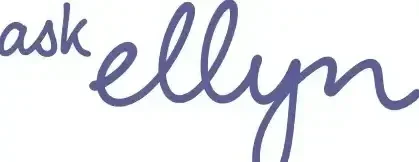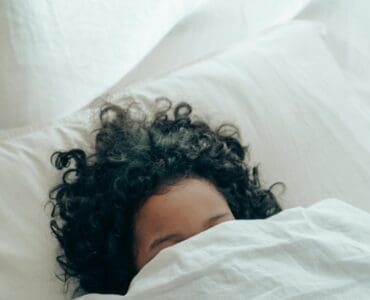Profound challenges mark the emotional journey of chemotherapy, but there are also surprising transformations. Among the unexpected physical changes many survivors face is the emergence of something affectionately known as chemo curls.
If you’ve recently undergone chemotherapy and are staring at a mirror wondering whose curly locks are suddenly atop your head, you’re not alone. I’ve been there, too. After losing my shoulder-length hair to chemo, I was shocked when it began growing back—softer, fluffier, and eventually, curlier than ever before. This wasn’t just new hair. These were chemo curls, and they marked yet another turning point in my recovery.
In this comprehensive guide, we’ll walk through what chemo curls are, why they happen, when to expect them, how long they last, and—most importantly—how to care for and embrace your new post-chemo hairstyle with confidence and grace.
What Are Chemo Curls?
Chemo curls refer to the tight, often frizzy or wavy curls that grow back after hair loss due to chemotherapy. For many patients, it’s a dramatic shift from their pre-chemo texture—whether they had stick-straight strands or a gentle wave, the post-treatment regrowth can look and feel entirely different.
This sudden curliness isn’t just anecdotal. It’s a well-documented phenomenon that results from how chemotherapy impacts hair follicles.
Read my blog Five Things that Might Surprise You About Chemo Curls
Why Do Chemo Curls Happen?
Though scientists still don’t fully understand the mechanism behind chemo curls, current research suggests chemotherapy drugs alter the shape and function of hair follicles during regrowth.
Hair follicles go through a cycle of growth (anagen), rest (telogen), and shedding (catagen). Chemotherapy interrupts this cycle by targeting rapidly dividing cells—including those in the hair matrix—causing hair to fall out. When treatment ends, and hair follicles resume activity, the regrowth may be altered due to the lingering effects of the drugs.
Here’s why that matters:
- Follicle shape changes: Straight hair grows from round follicles. Curly hair? Oval or twisted follicles. Chemotherapy may temporarily alter the follicle’s shape, leading to a new texture.
- Cell regeneration variances: The regrowth process might not be synchronized, leading to irregular textures or inconsistent curl patterns at first.
- Hormonal fluctuations and overall changes in body chemistry during and after treatment may also influence hair texture.
When Do Chemo Curls Start to Appear?
You can expect hair regrowth to begin about 2-3 months after your final chemotherapy session. Initially, the hair is very soft and fine— I called my first regrowth “duck fluff.” It’s a hopeful sign that your body is recovering.
Chemo curls started to make their grand entrance in my life around 4-5 months post-treatment. I remember being fascinated by my very curly, salt and pepper regrowth (I looked freakishly like Barack Obama!). As they grew more they became more defined, and developed a healthy shine. It was brand new, untouched baby hair after all!
Are Chemo Curls Permanent?
The big question: Will chemo curls last forever?
The answer depends on the individual.
In many cases, chemo curls are temporary. Over the course of 6 to 18 months, your hair may gradually return to its pre-treatment texture. For others, though, (and certainly for me) the curls can last several years—or even permanently if follicular changes remain. It’s part of the mystery and magic of healing—your body, like your hair, evolves. Today I would estimate I have 3B curls – in other word, a head of soft ringlets.
The Emotional Side of Chemo Curls
Hair loss is one of the most visible and emotionally taxing side effects of cancer treatment. For many of us, hair is part of our identity, our femininity, and our confidence. Losing it feels like losing a piece of ourselves. I remember when my hair was first gone I was more shook by this part of the journey than losing my breasts if I am honest.
So when the hair starts to grow back, it’s both exciting and intimidating. You may not recognize yourself. You might not know how to style your short hair or these unfamiliar curls. You might even mourn the loss of your old hair texture all over again.
But here’s what I’ve learned: Chemo curls aren’t just a physical change—they’re a badge of resilience. They signal survival, strength, and new beginnings. They might be unruly, unexpected, or even unwelcome at first—but they are also uniquely yours.
How to Care for Your Chemo Curls
Your new hair is fragile, especially in the early stages of regrowth. Here’s how to nurture it with love and care:
1. Go Gentle with Shampoo and Conditioner
Opt for sulfate-free, fragrance-free, and hypoallergenic hair products designed for sensitive skin and scalp. Look for shampoos rich in natural ingredients like:
- Aloe vera
- Coconut oil
- Shea butter
- Argan oil
Moisture is your new best friend. Chemo curls tend to be dry and frizzy, so deep conditioning once a week can help soften and define your curls.
2. Avoid Heat Styling (At First)
Blow dryers, flat irons, and curling wands can damage fragile new growth. If you must use heat, always apply a heat protectant spray and use the lowest possible temperature.
Embrace air-drying, plopping with a microfiber towel, or sleeping on a silk pillowcase or with a silk bonnet to minimize breakage.
3. Try a Scalp Massage
Scalp stimulation promotes blood circulation and may aid hair growth. Use a gentle silicone scalp massager or your fingertips with a nourishing oil like castor or jojoba oil.
4. Use a Wide-Tooth Comb
Say goodbye to fine brushes for now. Curly hair—especially new curly hair—is prone to tangling and breakage. Use a wide-tooth comb and detangle from the ends up.
5. Limit Washing Frequency
Washing your hair 1-2 times a week helps retain natural oils that moisturize your scalp and curls. On off days, use a refreshing mist or light curl activator spray to revive the shape.
Styling Tips for Chemo Curls
Rediscovering your style is a personal and empowering part of cancer recovery. Here are some ideas to help you feel like your beautiful self again:
1. Embrace the Pixie
Chemo curls often start with short hair. The pixie cut is a chic and modern option that lets curls do their thing while looking intentional and fashionable.
2. Accessorize with Confidence
Add scarves, headbands, or statement earrings to enhance your new look. Hair accessories can be both practical and stylish.
3. Experiment with Curl Enhancing Products
Curl creams, leave-in conditioners, and gels designed for Type 2-3 hair can help shape and define your chemo curls. Look for alcohol-free formulas that won’t dry out your strands.
4. Consult a Curly Hair Stylist
A curly hair specialist can help you shape and maintain your new texture. They’ll know how to cut for curl pattern, reduce bulk, and show you the best way to style your new hair.
For more styling tips read my blog on the topic.
The Science Behind Hair Texture Changes
While there’s no definitive medical answer to why chemo curls happen, here are a few scientific theories:
- Follicle miniaturization during chemo alters the diameter and shape of the new hair.
- Protein structure in hair (keratin) may rebuild differently post-treatment.
- Cell turnover rates are impacted by chemotherapy, affecting the way hair is formed and pigmented.
The exact drugs used, your genetics, age, and hormone levels all contribute to how your hair grows back. Some survivors even notice a change in hair color, going darker, lighter, or grayer.
FAQs About Chemo Curls
Q: How long will it take for my hair to grow back fully?
A: Hair grows about ½ inch per month on average. You may have a full head of curls within 6 to 12 months, but complete regrowth to your previous length can take 2-3 years.
Read about my hair regrowth journey here.
Q: Can I dye my chemo curls?
A: Wait at least 6 months post-treatment before using chemical dyes, and always do a patch test first. Consider plant-based dyes or professional services for a safer experience. Or…not. I chose to allow my hair to come back in its authentic salt and pepper form. I love it, I don’t feel old and I get lots of compliments on my color (often asking who did my highlights!)
Q: Do all cancer patients get chemo curls?
A: No. While many people experience a change in texture, not everyone develops curls. It depends on your hair type, treatment regimen, and body’s healing response.
Celebrating the Beauty of Change
Chemo curls are more than a quirky side effect. They represent the resilience of your body, the unpredictability of recovery, and the opportunity to embrace change.
While they may not have come from a place of joy, chemo curls can offer a new expression of identity and strength. They’re physical proof that your body has fought a hard battle and is in the process of healing.
You don’t have to love your chemo curls right away. But with time, care, and a little styling creativity, you might just fall in love with them—and with the powerful survivor in the mirror.
Final Thoughts: From Survivor to Stylist
As a breast cancer survivor myself, I understand the complex emotions tied to hair loss and regrowth. I remember the first time I ran my fingers through my chemo curls—how soft and wild and foreign they felt. I didn’t know if I should cry or laugh. I certainly took a lot of photos of the top and back of my head in sheer wonder of it all.
Eventually, my curls have became part of my story. A symbol of how far I’d come. And for sure they are a conversation starter! See my YouTube short here on this hot topic of discussion!
If you’re navigating this stage of your journey, know this: you’re not alone. Your hair will grow. You will smile again. And you just might find that your curls, like your spirit, are stronger and more beautiful than ever before.

